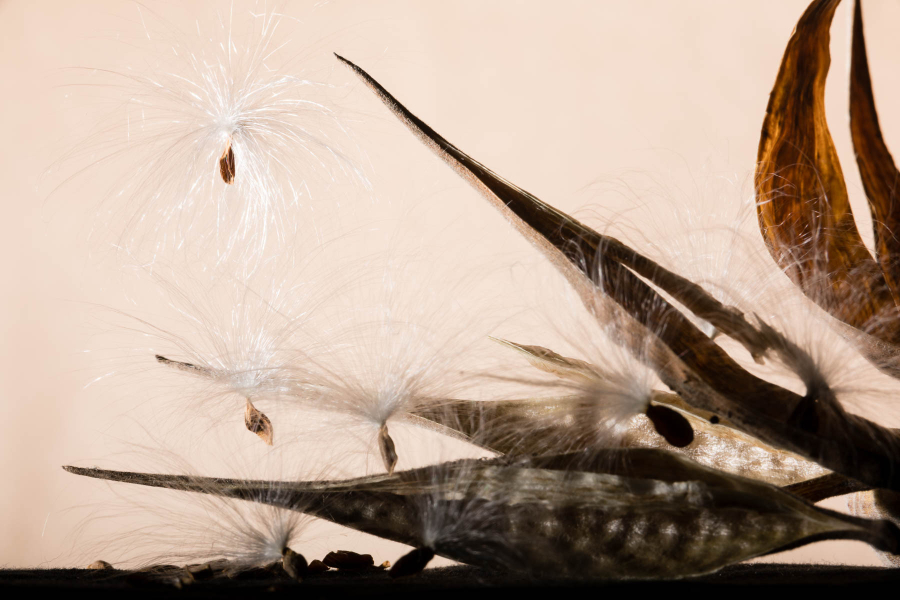The many uses of milkweed

Native throughout the Chesapeake Bay watershed, butterfly milkweed's bright-orange coloring and considerable nectar production attract bees, hummingbirds and other native pollinators. The fine, feathery fibers of the seed, called silk or floss, allow them to be carried on the wind.
As its name implies, butterfly milkweed is perhaps best known for its importance to butterflies. Also called butterfly flower or butterflyweed, the plant—along with other types of milkweed, including common milkweed and swamp milkweed—is the only food source of the monarch butterfly. Milkweed produces toxic chemicals that accumulate in a monarch's body, which makes them poisonous to predators.
Historically, milkweed has played an important role for humans as well. Pillows and mattresses have been stuffed with milkweed silk for centuries. During World War II, the plant gained national fame when war with Japan cut off access to the soft, cottony fibers of the seeds of the kapok tree. The U.S. had been using the fibers from the kapok tree seeds as filling for military life jackets.
Through a national campaign, an estimated 11 million pounds of milkweed were collected. This was acheived primarily through children using pillowcases, and the milkweed was used as a substitute filling.
Although potentially poisonous, the plant has been used for medicinal purposes as well. Many indigenous tribes applied milkweed sap for wart removal and chewed its roots to treat dysentery. It was also used in salves and infusions to treat swelling, rashes, coughs, fevers and asthma.
Milkweed was even added to dishes for flavor, or to thicken soups. To avoid its toxicity, special care was needed in the identification and preparation of the plant.
Learn more about butterfly milkweed, or learn how you can use native plants to provide habitat for butterflies and other pollinators.

Comments
Cut the milk weed stalk and use the white liquid to use on poison oak and ivy on your body. It will dry up the ivy.
I'm confused, if it's poisonous how can it be medicine. My cat has asthma. If it's possible to use safely. I found some and wondered if some how it can be used in a soap.
As a hunter ,I have seen milkweed pods, broken open ,and the stuffing (seeds) used to determine wind direction. This can be very helpful in determining which direction to approach certain game animals from.
Was milkweed used in life vest in WW11. I am a 7 year old remember collecting it.
The flowers smell wonderful and are pretty on the table
It's easy to separate the floss from the seed. Simply put open pods in a gallon size ziplock bag. Rub the outside of the bag back and forth. Shake, and now you have floss on the top and seeds on the bottom! I'm collecting the floss to make a pillow and bagging the seeds to give away. Save the butterfly!
As a child in 1960's my Father mailed about 25lbs. of Milkweed roots to an entity that paid him. I have no idea of the name of the entity. Will someone please provide me with information to contact them?
I have plants that was told are milkweed. Pictures aren't really helpful at identifying but cut them down and they grew back BIGGER.Dont want to destroy something useful but really need to know more.
I would love to garden with some milkweed to enhance life in my space for animal friends, especially butterflies.
I would like to purchase the silt to make a pillow. Is that possible?
I was in grade school during the 1940's and collected many many pounds of milkweed pods which were used as filling for life vests for the Navy during WW2.
It’s been told that milkweed is good for pain killer
Thank you!
Your comment has been received. Before it can be published, the comment will be reviewed by our team to ensure it adheres with our rules of engagement.
Back to recent stories